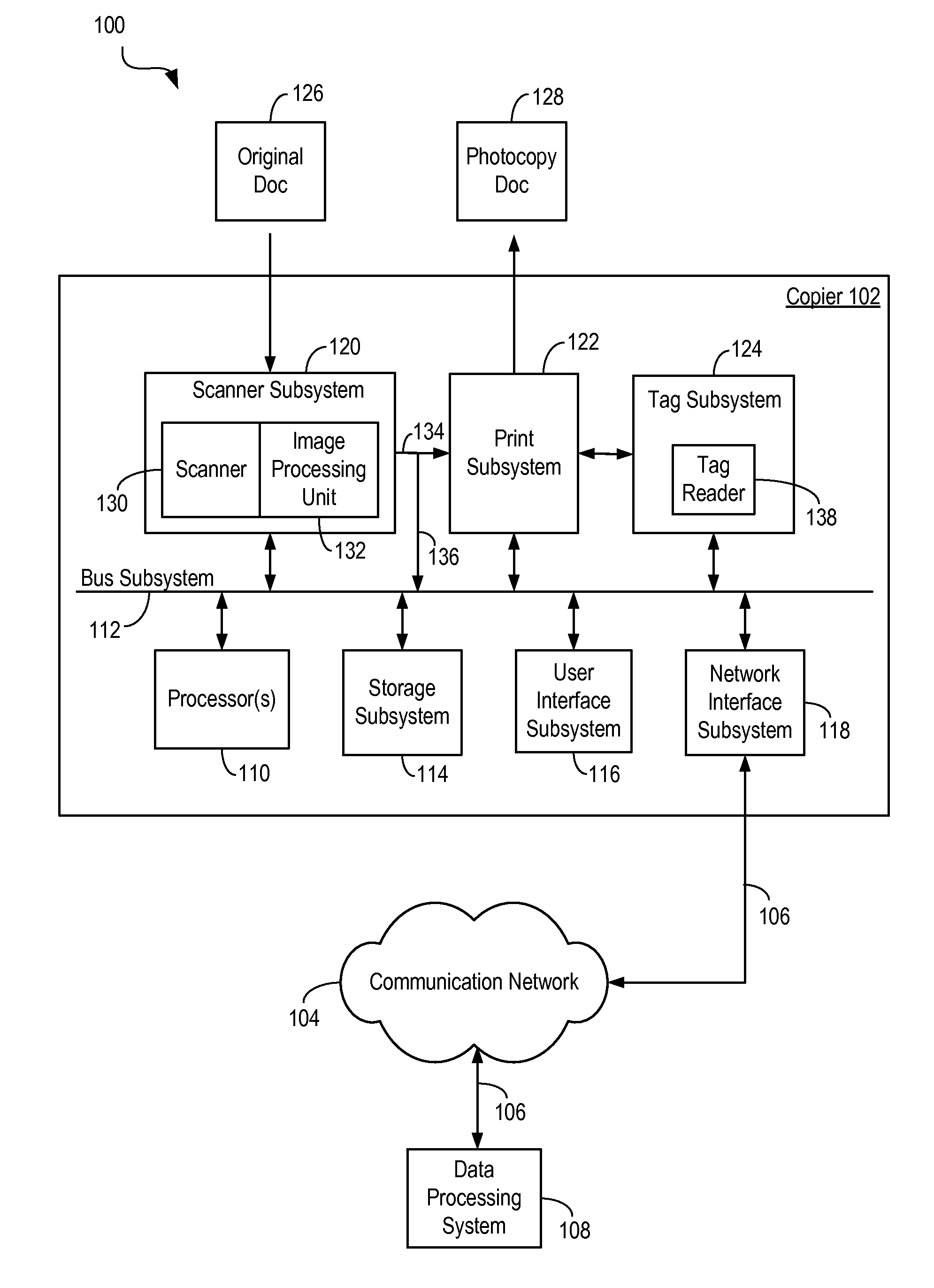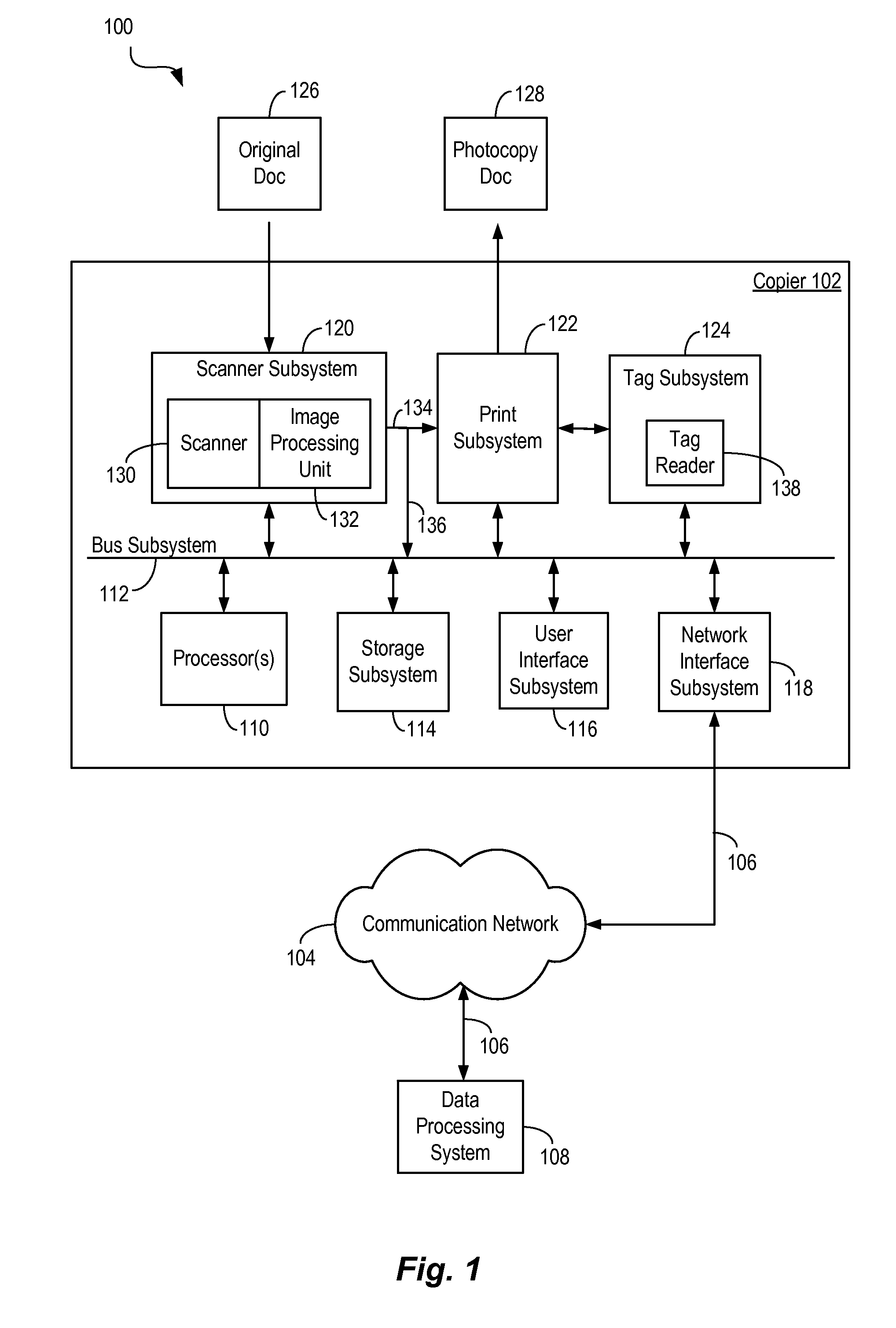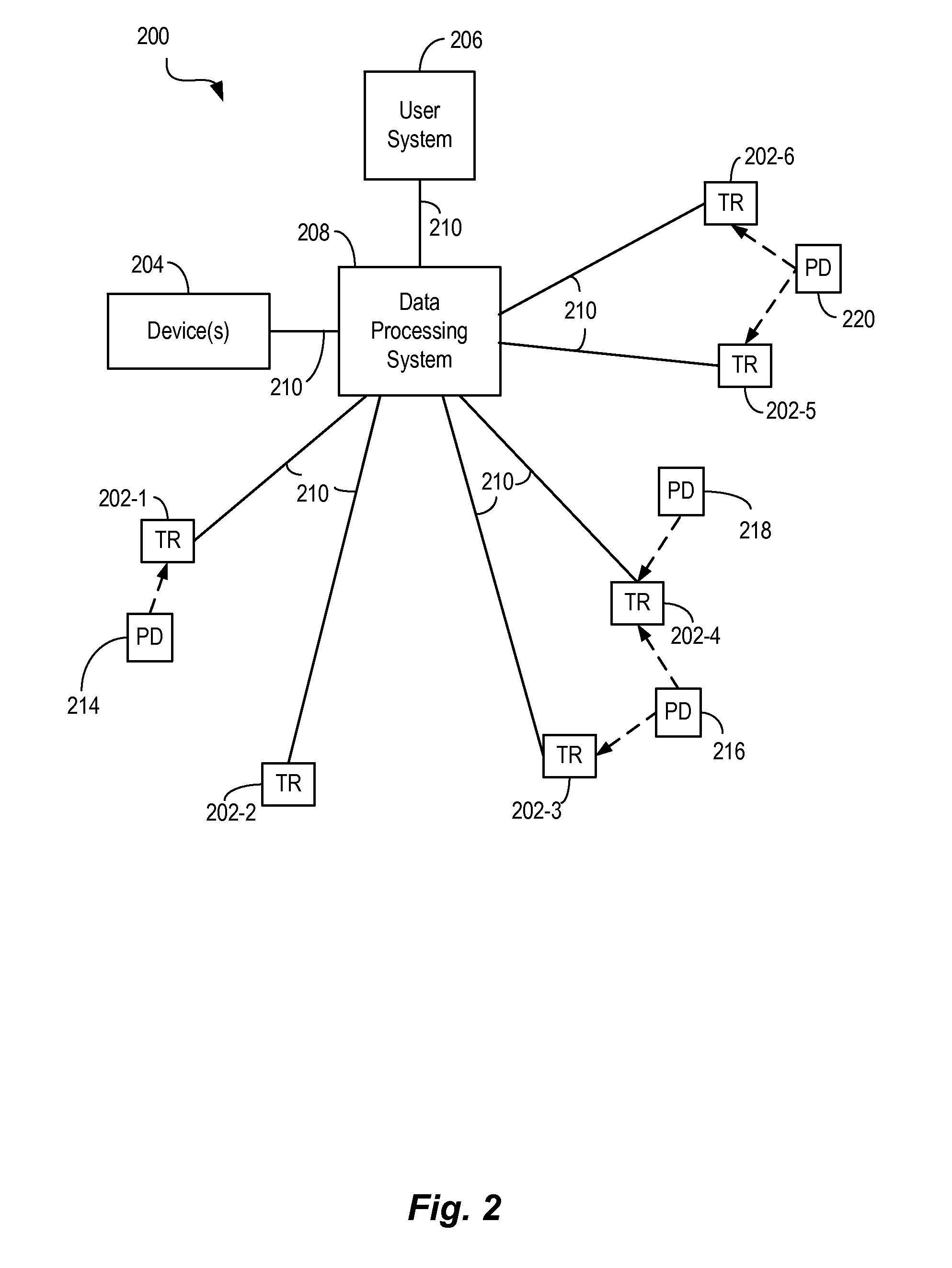Techniques for Performing Actions Based Upon Physical Locations of Paper Documents
a technology of physical locations and actions, applied in the field of document processing, can solve the problems of difficult identification of electronic documents corresponding to particular paper documents, difficult to track or perform actions based on physical locations of paper documents,
- Summary
- Abstract
- Description
- Claims
- Application Information
AI Technical Summary
Benefits of technology
Problems solved by technology
Method used
Image
Examples
Embodiment Construction
Techniques for Performing Actions Based Upon Physical Locations of Paper Documents
[0079]Certain embodiments of the present invention provide techniques for performing one or more actions based upon physical locations of one or more paper documents. For purposes of this invention, the term “paper document” is intended to refer to a document comprising one or more pages of any tangible medium on which information can be printed, written, drawn, imprinted, embossed, etc. For example, a paper document may refer to a document printed by a printer, a document output by a copier or scanner, a document output by a facsimile machine, a photograph, a book, a single page of paper, a document comprising a plurality of papers, and the like. In alternative embodiments, the teachings of the present invention may also be applied to other types of objects.
[0080]For purposes of this invention, the term “electronic document” is intended to refer to information stored in an electronic or digital form. ...
PUM
 Login to View More
Login to View More Abstract
Description
Claims
Application Information
 Login to View More
Login to View More - R&D
- Intellectual Property
- Life Sciences
- Materials
- Tech Scout
- Unparalleled Data Quality
- Higher Quality Content
- 60% Fewer Hallucinations
Browse by: Latest US Patents, China's latest patents, Technical Efficacy Thesaurus, Application Domain, Technology Topic, Popular Technical Reports.
© 2025 PatSnap. All rights reserved.Legal|Privacy policy|Modern Slavery Act Transparency Statement|Sitemap|About US| Contact US: help@patsnap.com



